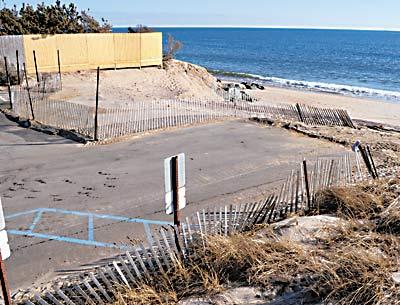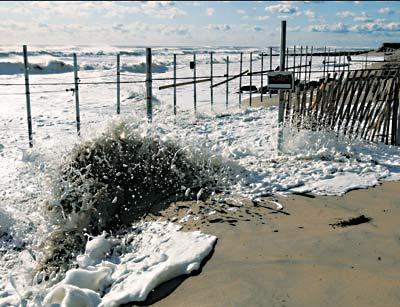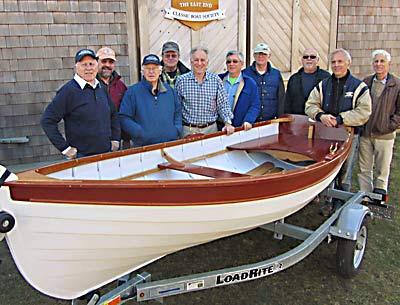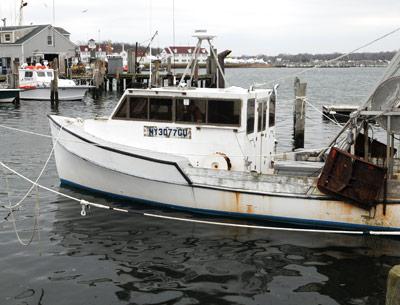Okay Work at Havens Beach
Okay Work at Havens Beach

After more than 15 years of discussion, Sag Harbor’s popular Havens Beach is going to have the remediation required to make it safe for swimmers.
A plan for the work developed by Inter-Science Associates after extensive testing was approved by the Sag Harbor Village Board unanimously at its meeting on Tuesday. The village’s harbor committee had recommended the village do so after holding a hearing on the plan on Monday. The committee agreed the work was long overdue and would significantly improve the water quality around Havens Beach, as well as protect and restore the ecosystem.
Rich Warren of Inter-Science said the work is estimated to cost around $200,000, but, since bids have not yet been received, the actual cost is uncertain.
Questions about pollution in a creek — more correctly a stormwater drainage ditch — that crosses Havens Beach emerged in the 1990s, with reports of skin rashes and eye and ear infections. Fecal coliform and other bacteria were said to be the most likely contaminants. In 2007, Kevin McAllister, the Peconic baykeeper, called the situation a grave problem, and said the public was at risk.
Inter-Science reported it had found heightened levels of human and animal waste bacteria in the drainage ditch, and in some cases the bathing water itself, especially after intense rainfall. Mr. Warren said stormwater from more than 20 acres runs through the ditch.
Although many people walk dogs in a field adjacent to the ditch, Mr. Warren said it is properly supplied with cleanup materials, although he assumed that not all owners were diligent at removing their dogs’ waste.
The program recommended by Inter-Science includes a filtration sponge that processes and cleans water in an enclosed area as well as bio-filtration, which involves planting native species to filter wastes naturally. The procedures are known to work well together, Mr. Warren said.
“I think it is a positive step,” Mr. McAllister said yesterday. He said he hoped the village would get the needed funding, and he suggested oversight to ensure the project’s completion. The Peconic Baykeeper organization will help monitor the project.
The first and most lengthy step will be to dredge the ditch, which Mr. Warren said will certainly be “stinky” because the muck in it has sat stagnant for many years. He hoped dredging could begin before winter weather made it difficult, and said that Inter-Science had applied for the necessary permits from the State Department of Environmental Conservation and the Army Corps of Engineers.
Meanwhile, the board and the harbor committee also approved heaping snow plowed from the streets at the beach. Bruce Tait, chairman of the harbor committee, said the relocation of the snow piles to the beach’s gravel parking area, which is pitched away from the water, and fencing and hay bales that have been installed, go “above and beyond” and are a significant improvement over the past. But, he said the committee would revisit the process in the future.
The benefits of removing snow from Main Street outweigh any risk of placing it on the beach, Mr. Tait said, since Main Street’s storm runoff goes “straight out to the bay” anyway. However, Jeffrey Peters, a committee member who ultimately voted to approve the snow’s placement at the beach, said, “I don’t want to see this pushed under the rug.”









